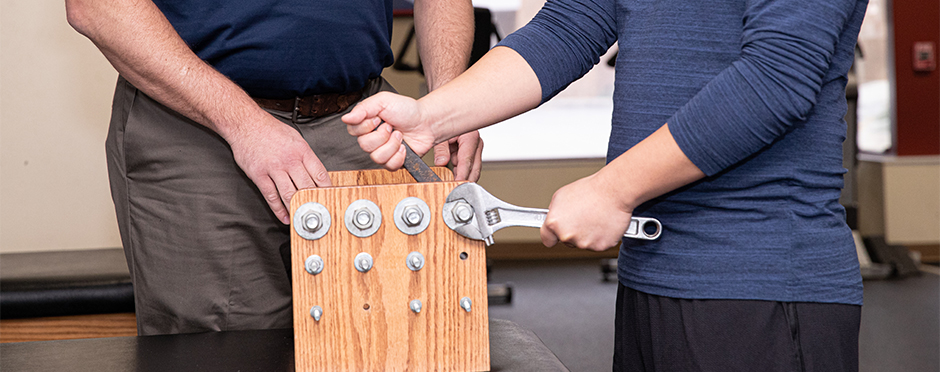
Occupational Therapy And Workers’ Compensation: What’s The Difference?
Leave a CommentYou may have heard the terms “Occupational Therapy” and “Workers’ Compensation” before but may be confused about their meaning, and more importantly, how they differ. Below, we take a closer look at each service line and explore how they can support patients to get back to doing the things they love.
What Is Occupational Therapy?
Many believe that occupational therapy (OT) is only for those in the workforce with jobs; while occupational therapists do help individuals who have become injured at work, OTs support patients of all abilities who are experiencing dysfunction throughout their daily tasks or occupations. This includes physical, cognitive, visual, or mental issues that interfere with daily tasks such as getting dressed, cooking, bathing, or completing chores around the house like yard work. While occupational therapists tend to focus on impairments of the upper extremities, such as the shoulder, elbow, and wrist, OTs also work with patients who have experienced a stroke, head injury, spinal cord injury, or amputation.
What Is Workers’ Compensation?
Workers’ compensation occurs when an individual is injured on the job and is covered to receive medical care to assist their injury. This includes job-specific rehabilitation, which may include physical therapy, hand therapy, or occupational therapy. It focuses on customized strength and conditioning programs that mimic the daily tasks required by the patient’s job to prepare them for a safe and successful return to work.
How Do These Two Go Together?
Occupational therapists focus on daily tasks, an individual’s hobbies and passions, their ability to care for their living environment, and their ability to participate in work tasks. Therefore, work duties, workstations, and ergonomics are essential for an occupational therapist to ensure proper body mechanics are used to reduce potential injury and/or re-injury.
What Is The Athletico Difference In Occupational Therapy And Workers’ Compensation?
All of our occupational therapists are trained to provide comprehensive care to assist the upper extremity with dysfunction that a work-related injury may cause. This “out of the box” skill reduces the potential of re-injury and back to work as quickly as possible. Our therapists use functional lifting in acute rehabilitation to ensure clients are participating in progressive work skills to reduce re-injury from poor body mechanics for return-to-work status. Lastly, our therapists are effective and time-efficient, communicating with all providers involved in the client’s care to ensure a team approach. This allows for a smooth care process to accomplish the same goal – a client returning to work.
The Athletico blog is an educational resource written by Athletico employees. Athletico bloggers are licensed professionals who abide by the code of ethics outlined by their respective professional associations. The content published in blog posts represents the opinion of the individual author based on their expertise and experience. The content provided in this blog is for informational purposes only, does not constitute medical advice and should not be relied on for making personal health decisions.
